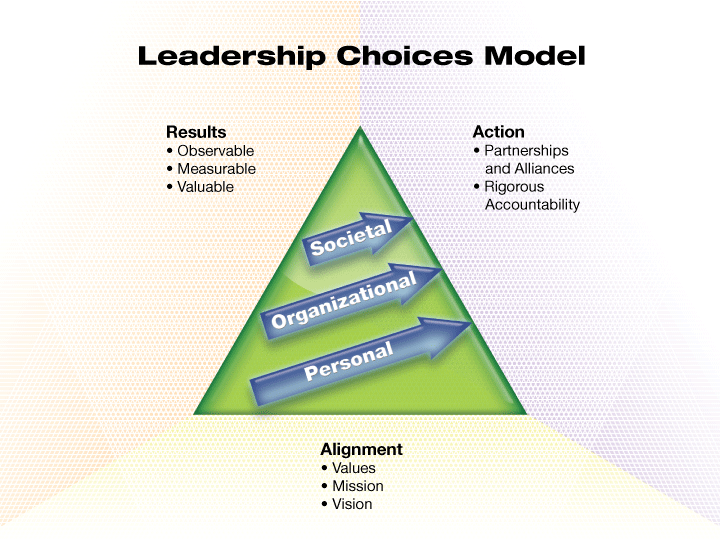
Inclusive leadership is more than just a trendy term. Companies that embrace it are 1.7 times more likely to lead in innovation. That's a big deal. It's clear why inclusive leadership is catching the attention of smart businesses. By valuing diversity and ensuring every voice counts, companies boost creativity and solve problems better. This approach also fuels growth and performance. In this article, we'll explore what makes inclusive leadership tick, why it's strategically smart, and how you can make it work in your own organization. Whether you're an experienced leader or just starting out, understanding inclusivity might be the key to real success. Let's get started!
Summary: Dieser Artikel beschreibt die strategischen Vorteile, die Implementierung und die Erfolgsmessung von inklusiver Unternehmensführung. Er bietet auch eine FAQ-Sektion zur Klärung häufiger Fragen.
Understanding the Strategic Advantages of Inclusive Business Leadership
Defining Inclusive Business Leadership for Strategic Advantage
Inclusive leadership is about creating a space where everyone feels respected and valued, regardless of their background. It involves integrating diverse viewpoints into decision-making and team interactions, ensuring fairness and equal opportunities for all.
Leaders who embrace this style focus on fostering an environment where individuals feel safe to be themselves and build genuine connections. They actively work to dismantle barriers to equality and nurture a culture where everyone can participate in opportunities for growth.
For instance, inclusive leaders might:
- Conduct regular team check-ins to gather everyone's input.
- Implement policies that support equal chances for development.
Explore more insights on inclusive leadership online.
Historical Context and Strategic Evolution of Inclusive Leadership
Inclusive leadership has evolved significantly from merely acknowledging diversity. Today, it's about cultivating environments where diverse perspectives drive innovation and success. By 2025, inclusive leadership is expected to be an essential skill for businesses, transitioning from a "nice-to-have" to a strategic advantage.
Research highlights substantial benefits:
-
73% more innovation revenue
-
70% better success in new markets
-
Up to 36% more profitability for companies with strong inclusive leadership
-

The emphasis has shifted from diversity alone to inclusion and belonging, where leaders ensure individuals feel safe and engaged. This approach reduces turnover and enhances performance. Historically, businesses might have focused solely on diversity metrics, but leading companies now prioritize practices that foster innovation and employee retention.
For further exploration of the evolution of inclusive leadership, visit the Inspiring Workplaces website.
Strategic Advantages of Inclusive Business Leadership
Innovation and Creativity Boost with Inclusive Leadership
Inclusive leadership significantly boosts innovation and creativity. Companies practicing it experience 73% more innovation revenue than those that don't. Why is that? By integrating diverse perspectives, companies foster an environment ripe for fresh ideas and creativity. Inclusive leadership ensures everyone feels valued, encouraging the sharing of unique views. This approach unlocks fresh ideas and untapped potential. Notably, companies with diverse management teams witness nearly 19% more innovation revenue on average, as they challenge conventional thinking and explore new solutions.

Consider a Wall Street firm as an example. They leaped from 15th to 1st in their research department rankings by embracing inclusive leadership. By allowing women analysts to contribute insights from informal networks previously overlooked, they demonstrated how inclusion can lead to enhanced innovation through diverse experiences.
Financial Performance Improvement through Inclusive Leadership
Beyond creativity, inclusive leadership also enhances financial performance. Companies with robust inclusive leadership can achieve up to 36% better profitability than their competitors. This success stems from being 70% more likely to capture new markets, driving revenue growth. Furthermore, companies with gender-diverse executive teams are 25% more likely to enjoy above-average profitability. By fostering an inclusive culture, businesses not only expand market share but also attract top talent, bolstering financial success.

Continuous research underscores that inclusive leadership correlates with superior financial results. Companies with gender-diverse executive teams have a 25% greater chance of achieving above-average profits. These findings highlight the strategic advantage of inclusive leadership in enhancing financial performance.
Enhanced Decision-Making with Inclusive Leadership
Inclusive leadership enhances decision-making by incorporating diverse perspectives and reducing groupthink. Teams led by inclusive leaders report a 20% improvement in decision-making quality. This improvement is due to the creation of a culture of safety and openness, where everyone feels comfortable sharing their insights.
Inclusive teams exhibit 29% stronger collaboration, which further enhances decision-making. The diverse viewpoints encouraged by inclusive leadership effectively address complex challenges, leading to better strategic decisions. By fostering an environment where diverse opinions are valued, inclusive leaders ensure thorough evaluations of options and outcomes.
Employee Engagement and Retention through Inclusive Leadership
Inclusive leadership is crucial for boosting employee engagement and retention. It can reduce employee turnover risk by up to 76%, a vital factor in competitive talent markets. Employees in inclusive environments report higher engagement levels as they feel valued and heard, aiding retention. Teams with inclusive leaders are 17% more likely to report high performance, reflecting increased engagement and motivation.
Inclusive leadership cultivates a culture of belonging and psychological safety, fostering loyalty and commitment among employees. Companies that embrace inclusive leadership excel at attracting and retaining top talent, providing a strategic advantage. The BCG’s 2023 Bliss Index report highlights how inclusive leaders significantly reduce turnover risk, underscoring the importance of inclusive leadership in retaining top talent.
In summary, inclusive leadership offers strategic advantages in innovation, financial performance, decision-making, and employee engagement. By nurturing diverse and inclusive environments, companies unlock significant benefits that drive long-term success. Inclusive leadership is not just the right thing to do; it is essential for thriving in a diverse and dynamic world.
Explore how inclusive leadership drives innovation and business success.
Learn about the strategic imperative for inclusive leadership growth.
Understand the role of inclusive leadership in employee engagement and retention.
Implementing Inclusive Business Leadership
Traits of Inclusive Leaders for Strategic Advantage
Inclusive leaders stand out by setting a clear vision for what inclusion and diversity mean in their organization. They ensure everyone understands its importance by communicating this vision at all levels. These leaders don't just talk the talk—they walk the walk. They:
- Listen to different viewpoints
- Encourage open conversations
- Treat everyone with respect
They also continuously learn about unconscious bias and how to effectively lead diverse teams.
Accountability is another crucial aspect. Inclusive leaders ensure everyone, from top executives to everyday employees, contributes to creating an inclusive environment. This accountability fosters a culture where everyone is committed to inclusivity. They maintain open communication and make decisions with input from the entire team. For example, a leader might hold regular meetings to hear from quieter team members and adjust policies based on employee feedback.
Strategies for Building an Inclusive Culture
To build an inclusive culture, implement policies that support inclusion in hiring, promotions, and professional development. These policies ensure that inclusion is more than just a buzzword—it's integral to the organization's operations. Supporting Employee Resource Groups (ERGs) is another valuable strategy. ERGs help build community and give diverse employees a voice in shaping company policies.
Mentorship programs that connect employees from different backgrounds facilitate knowledge sharing and career growth, enhancing workplace inclusivity. Using inclusive communication, like gender-neutral language and respecting cultural differences, ensures everyone feels heard. Flexible work options further support inclusion by catering to the varied needs of employees. Leadership commitment and accountability are key to integrating diversity, equity, and inclusion (DEI) into daily operations and building trust within the company. A company that updates hiring practices to include diverse candidates, supports ERGs, and offers mentorship programs is on the right path to building an inclusive culture.
Addressing Challenges in Inclusive Leadership
Balancing inclusive decision-making with efficiency can be challenging. Setting clear guidelines and timelines helps maintain productivity. Using defined metrics to measure progress and regularly reviewing inclusion goals helps identify gaps and refine strategies. Encouraging ongoing feedback allows organizations to respond to employee concerns and enhance inclusion efforts.
Continuous DEI training equips managers to handle unconscious bias and manage diverse teams effectively. Securing leadership buy-in is crucial to overcoming resistance and embedding inclusion as a core value. An organization that uses regular surveys to track progress, offers ongoing training, and has leaders who actively support DEI efforts exemplifies how to tackle challenges in inclusive leadership.
Inclusive leadership isn't just a nice-to-have—it's a strategic advantage. It leads to:
- 73% higher innovation revenue
- 70% more success in new markets
- Up to 36% better profitability
Inclusive leaders also reduce employee turnover risk by 76%, which is significant in today's job market. They enhance employee belonging and psychological safety by 70 percentage points, resulting in 17% higher performance, 20% better decision-making, and 29% stronger collaboration. These results demonstrate how inclusive leadership can significantly boost organizational success.

Source: ESADE, Forbes, Jointhecollective.com.
Measuring the Strategic Advantage of Inclusive Leadership Initiatives
Key Metrics and KPIs for Evaluating Strategic Advantages
To gauge the effectiveness of inclusive leadership, a blend of quantitative and qualitative insights is essential. Begin with standardized measures such as leadership commitment indices. These indices help track openness, availability, and accessibility in leadership roles, providing a benchmark for inclusivity.
Key Steps:
- Listen to Underrepresented Groups: Actively seek and incorporate feedback from these groups to ensure a safe and open environment for all voices.
- Integrate Inclusive Leadership into Talent Frameworks: Use tools like 360-degree feedback to assess inclusive behaviors.
- Monitor DEI Metrics: Focus on key indicators such as representation, pay equity, and employee perceptions of inclusion.
Additionally, evaluate team composition, turnover rates, and promotion patterns as indicators of inclusivity within the organization.
Strategic Advantage Case Studies and Real-World Examples
Real-world examples illustrate the application of these measurement strategies effectively:
- Barilla: This global food company utilizes a leadership commitment index to quantify inclusive leadership, demonstrating how metrics can be applied to inclusive behaviors.

- FAIRER Consulting: They offer a framework with seven core traits of inclusive leaders, aiding organizations in developing these skills.
These examples underscore the strategic advantage of inclusive leadership. Companies prioritizing inclusion excel in market expansion and innovation. Notably, diverse management teams generate approximately 19% more innovation revenue compared to their less diverse counterparts. This emphasis not only enhances business outcomes but also equips organizations to navigate contemporary challenges more effectively.
Source: PMI | Source: CultureMonkey | Source: WomenTech | Source: ESADE
FAQ Section
How Can Inclusive Leadership Enhance Employee Retention?
Inclusive leadership is crucial for enhancing employee retention. It fosters an environment where individuals feel a sense of belonging and respect. When employees feel valued, they are less inclined to leave. By embracing diverse viewpoints and ensuring equitable opportunities, inclusive leaders enhance employee engagement and loyalty. This leadership style cultivates a positive work culture, increasing job satisfaction and commitment.
For instance, a tech company that adopted inclusive leadership experienced a 25% reduction in turnover within a year, attributed to an improved workplace atmosphere.

For further insights, explore Plutus Education, Monitask, and Coursera.
Key Traits of Inclusive Leaders for Strategic Advantage
Inclusive leaders exhibit distinct traits that enhance their effectiveness. They demonstrate empathy, cultural awareness, and actively listen to diverse perspectives, fostering an environment of understanding and inclusion. Key qualities include openness, humility, and fairness, ensuring everyone has the opportunity to contribute and develop. They are also adaptable and committed to continuous learning, enabling them to meet the needs of a diverse team.
Consider a retail leader who conducts regular listening sessions with employees from various backgrounds, integrating their feedback into company policies to build trust and inclusivity.

More details on these traits are available on Indeed, OnStrategyHQ, and Monitask.
Driving Innovation Through Inclusive Leadership
Inclusive leadership propels innovation by leveraging diverse perspectives to ignite creativity and novel solutions. By fostering collaboration among varied teams, inclusive leaders create an environment where new ideas can flourish. They encourage risk-taking and learning from mistakes, both essential for innovation and continuous improvement.
A software company led by such management successfully launched a new product line by harnessing ideas from its diverse team, surpassing competitors in innovation. For more information on this topic, visit Plutus Education, Coursera, and Monitask.